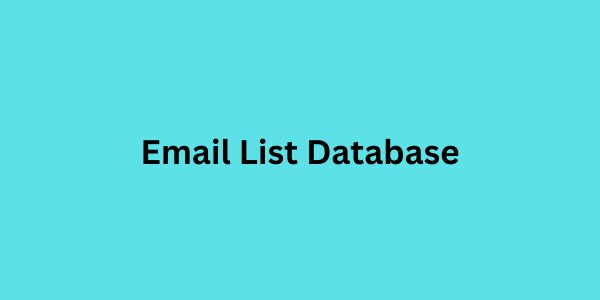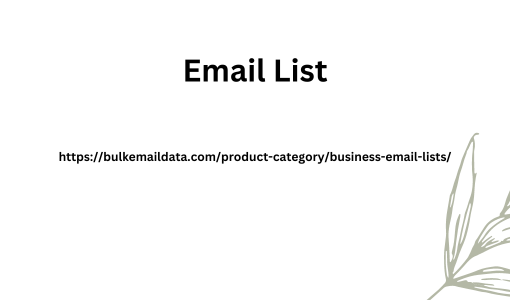Can you do to prevent your Spam filters are considered vital in email service providers as they keep unwanted and, at times, harmful emails away from the user’s eyes. These filters scan incoming messages for legitimacy or spam using a variety of techniques and many, many criteria. Knowing how spam filters work and ways to avoid having your emails marked as spam could hugely improve the power of your email communication.
How Spam Filters Work
Content Analysis: Spam filters analyze the contents of an email. This would include the subject line, body text, and any attachments scanned for keywords and phrases known to be use in spam emails. The words “free,” “discount,” or “urgent” might be pick up by a filter and raise the spam flag that marks it as probable spam.
Reputation of Sender:
Spam filters also take into consideration UAE Email Database the reputation of the sender. If an email address or domain has been reported to send spam earlier, consequent emails are probably going to be filter out. That kind of reputation is built up over time and involves user interactions that, for instance, show how many recipients mark emails from that sender as spam.
Spam traps are a list of e-mail addresses providers keep track of which are set to catch spammers. If one sends e-mails to such addresses, this can be a signal to the spam filter about questionable practices and further damage a sender’s reputation.
User Interaction: can you do to prevent your
Filters also record the rate at which recipients interact with emails. High open rates and high engagement are indicative of the fact that emails are relevant and want; low engagement or high deletion rates could even mark future emails as spam.
Technical Protocols: Spam filters analyze a variety of technical protocols to recognize spam. Includ among these are authentication protocols like SPF and DKIM. These protocols verify that the email is coming from an authoriz server and that it hasn’t been tamper with en route.
Avoiding Spam Filters
For your emails to reach your recipients’ inboxes, here are a few strategies you might well consider:
Keep an email list clean:
Update the list of subscribers by removing those who are not active. A clean list diminishes the chances that emails will be mark as spam. Additionally, it will increase the response rate to your email.
Get permission: Get permission first from users before sending them emails. This is not only in compliance with the law, but it can also help in building a better audience base.
Create Relevant Content:
Create and provide value-adde relevant content that best addresses your audience’s interests. Avoid spammy keywords in your subject lines and email bodies. Personalize emails often do better since they can relate more to the recipient.
Optimize Technical Elements: Emails should be technically compliant by setting up SPF and DKIM records. This lets the system verify you as the sender and thereby improve your reputation rating.
Track the metrics: Notice can you do to prevent your open and click rates, and when you notice a fall in these, then reassess the content of your emails and plan strategy again to re-engage with your audience.
Test Before You Send: can you do to prevent your
Using tools that will let you pre-test an email before sending might help with using this insight for how likely it is that your email will end up in someone’s junk folder.
Avoid Large Attachments: Large files can easily trigger spam filters. Use links from cloud storage services instead of sharing them directly.
In short, spam filters protect the subscribers from unwant emails and at the same time are a strong mechanism for. The service providers. You are better off studying how it works and following best practices to get your emails in the inbox rather than in the spam box.




